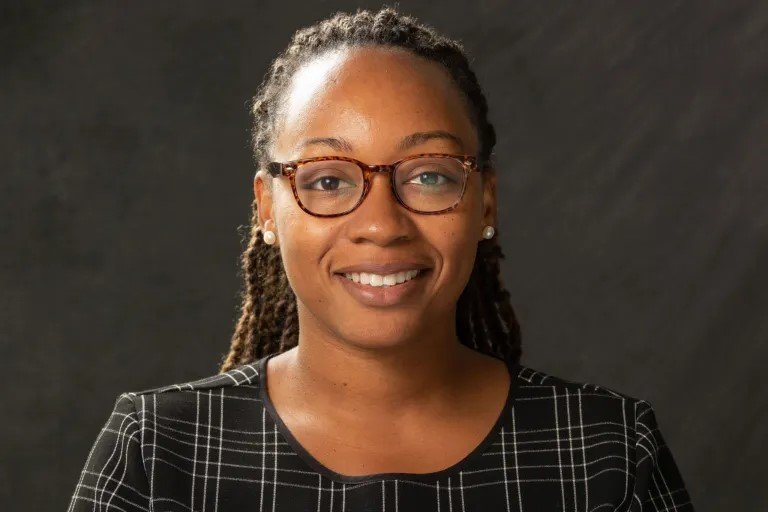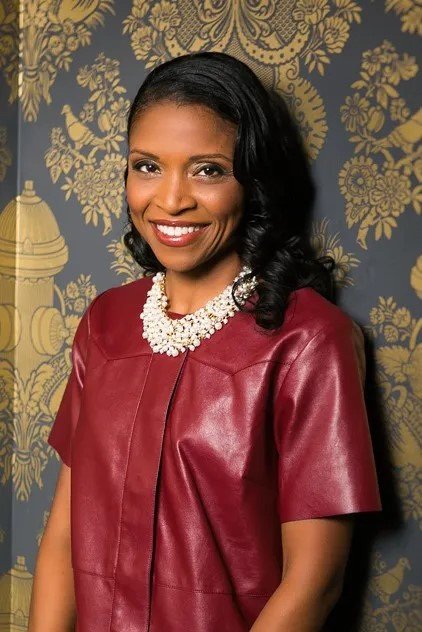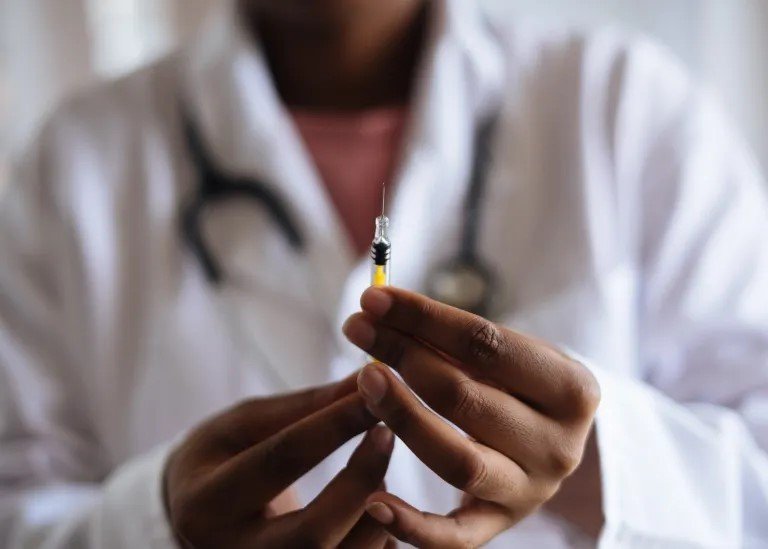Fact or Fiction: Social Media Health Disinformation
Illustration by Demis Courquet-Lesaulnier.
Black people are being deliberately targeted with false health info, making it crucial to vet what pops up in your feeds.
This story is part three of Word In Black’s Health Misinformation series, exploring the ways Black folks can identify false information and verify credible health sources. Read the series.
By Anissa Durham
“Don’t go on the internet for health information.”
That’s what Brooklyne Gipson, an assistant professor of communications at the University of Illinois Urbana-Champaign, says. Her research looks at how misinformation and disinformation circulate on social media about Black women and the material impact of it.
Social media, as described by many experts in this health misinformation series, is a tool that can be used to provide valuable information. However, it’s also a tool that can easily be misused as there is little to no regulation on the information being shared and spread. If you are going to go on social media for health information, Gipson says to look for reputable sources.
“Johns Hopkins has a really dope social media page where they put out health information,” she says. “I trust them.”
But in the age of memes, jokes, short clips, and viral photos, many Black folks just want to laugh, Gipson says. Anything visual-based is where she tends to see misinformation spread, with YouTube and Instagram being the easiest platforms for people to consume. For mis and disinformation groups who repost content to Instagram stories or share links to YouTube videos, an aspect of inclusion is involved.
“It’s like a performance of being in the know about this secret language, which is typically conspiratorial stuff that is a lot of mis and disinformation,” Gipson says. “So, people want to perform that, and it’s hard to repost a book.”
Whether it be disinformation on Twitter, TikTok, Facebook, or Instagram — the amount of false information with the intention to mislead is abundant. A 2021 report by the Pew Research Center found that a minority of Twitter users produce most of the tweets from U.S. adults, and most active users are less likely to see the tone or civility of discussions online as a major problem on the site.
Selina Holmes, 57, is a New Jersey resident who became a health navigator during the COVID-19 pandemic. As a health navigator, she works with churches in the community to dispel mis and disinformation and provide factual health information.
“The same way (misinformation) got out throughout the community, the true knowledge of what was going on was now spreading throughout the community,” she says. “A lot of it is word of mouth.”
During the pandemic, Holmes stayed away from blogs and social media because of the amount of false information quickly spreading through different sites. Instead, she went to trusted resources in the community, verifiable websites, and physicians for health information.
I think what’s beautiful about Black folks is that we do have alternative relationships to the world and the way we consume information.
— BROOKLYNNE GIPSON, ASSISTANT PROFESSOR OF COMMUNICATIONS AT UNIVERSITY OF ILLINOIS URBANA-CHAMPAIGN
Health misinformation about COVID-19 is not the only example found on social media spaces. Misinformation and disinformation about cancer, diabetes, and obesity are other health topics that are saturated with inaccurate information. In another 2021 report by the Pew Research Center, 19 countries were surveyed about their views on social media and its impact on democracy. Many countries see social media as making it easier to manipulate people with false information or rumors — with 85% of U.S. residents surveyed saying this is the case.
The Racist Roots of Conspiracy Theories
“Black folks have a history of feeling conspiratorial for very good reasons because we’ve had so many institutions and systems misrepresent us — it actually makes a lot of sense,” Gipson says. She is working on a project that examines the complex conversations about how racism exists within the country and how to vet information in a society that has grossly mistreated Black folks.
One thing has become painstakingly true: the history of Black folks’ experience of medical racism, mistreatment, and experimentation is at the root of conspiracies that circulate during pandemics and about health issues that disproportionately impact our community.
Some theories that circulated during the pandemic were the belief that the COVID-19 vaccine could sterilize men and women and the virus was “released” to control the population. Many conspiracy theories are often coupled with fear and a reasonable lack of trust. But they are also used as a crutch for why someone is mistrustful of the healthcare system.
“When I’m seeing mis and disinformation, it is mostly true mixed in with a big lie,” Gipson says.
Conspiracy theories, in essence, are a form of narrative. When they are shared and spread among people, it’s usually through word of mouth or on social media spaces. It can be difficult to draw the line between a conspiracy theory that’s just a story you hear with little impact, versus one that can literally impact the healthcare someone receives.
Photo courtesy of Brooklyne Gipson.
“In the broader society, we have this anti-Blackness that not only mistreats us in the medical industry but then treats us like we’re crazy when we don’t trust the medical industry,” Gipson says. “I would argue that makes sense, especially when you’re disempowered.”
Whether someone believes a conspiracy theory or not, getting preventative care and treatment is largely based on how you’ve personally experienced and interacted with the healthcare system.
Countering Anti-Vaccine Disinformation
Yolandra Hancock is a board-certified pediatrician and obesity medicine specialist in Maryland. As a public health expert, one of her main roles has been providing health information to her patients. During the pandemic, she did Facebook Lives weekly to break down the science of COVID-19 and dispel the misinformation that was circulating on social media.
But her work wasn’t exclusive to COVID-19 education, she regularly educates her patients on diabetes, heart disease, and obesity. “I like to serve as a conduit of trusted, culturally relevant information and continue to do so on Facebook Live on Thursdays,” she says.
As a physician who uses social media actively to reach folks, she is all too aware of the health misinformation and disinformation that circulates online. On Facebook, Hancock is part of multiple mom groups. Oftentimes moms in the group come for medical advice, which can quickly become filled with misinformation. At times, she says nothing, but other times she pulls the “doctor card.”
Courtesy of Yolandra Hancock.
“I think one of the scary things about social media is that clearly, they are driven by algorithms. So, they’re going to feed you what you want to eat,” she says. “As a pediatrician, our biggest mis and distruth is around vaccines. I trained in Southern California, it’s likely the birthplace of the anti-vaccine movement, and I’ve had to counter it since I was in medical school.”
One of the most notorious narratives of disinformation was the claim that vaccines were linked to autism in children. More than 20 years have passed since Andrew Wakefield, a now de-licensed British doctor falsely linked the measles, mumps, and rubella (MMR) vaccine to autism. In the U.K. following the publication of an article by him in the medical journal The Lancet, parents began refusing to vaccinate their kids. The result: thousands of children were diagnosed with measles, hundreds were hospitalized, and a handful died.
The anti-vax group puts in more money than the CDC and pediatricians because they’re Google-optimized.
— YOLANDA HANCOCK, BOARD CERTIFIED PEDIATRICIAN & PUBLIC HEALTH EXPERT
The poison of this disinformation weaseled its way to the U.S. A 2016 SPARK survey of more than 16,000 children with autism and their caregivers. Researchers found one in six caregivers believe vaccines could be the cause of autism in their child. Time and time again, this has been proved factually incorrect. There is no link between the vaccines children receive and the development of autism spectrum disorder.
Yet this disinformation continues. Hancock says she hears these same narratives over and over again. More than one million children have been studied to see whether there’s a relationship — and scientific studies have shown there is no relationship. The article was removed from The Lancet years ago. Despite all the consequences, people still believe that vaccines are bad, dangerous, and may cause autism.
Similar narratives were spread about the COVID-19 vaccine. Hancock heard rumors that it would affect your reproductive ability, get in your DNA, and that these chemicals will cause you to have permanent damage.
About 40% of my patient population are families who’ve chosen not to vaccinate their children at all.
— YOLANDA HANCOCK, BOARD CERTIFIED PEDIATRICIAN & PUBLIC HEALTH EXPERT
“What folks don’t recognize is that when you give the same narrative to various vaccines that have different ingredients — when you critically analyze it, it starts to not make sense,” she says.
Parents don’t want to do anything to harm their baby, something Hancock understands on a personal and pediatric level. But parents are also susceptible to anti-vax movements. Instead of Googling ‘What vaccines does my baby need?’ Hancock says she has found parents Googling ‘How safe are vaccines?’ And that’s where the problem starts.
“Well, the anti-vax group puts in more money than the CDC and pediatricians because they’re Google-optimized. And because you Googled it, Facebook is going to send you the “news articles” that show you that vaccines are dangerous,” she says. “TikTok is going to recommend to you influencers that give disinformation, so it becomes a very very vicious cycle that makes it very difficult for us pediatricians to counter.”
Photo by RF._.studio/ Pexels
Distruths and mistruths disproportionately impact Black folks in a number of ways and for a variety of reasons, Hancock says. Since starting her own practice, this allows her more time to educate families and children about the safety of vaccines and any health misinformation folks see or hear about online.
“About 40% of my patient population are families who’ve chosen not to vaccinate their children at all,” she says. “It’s the highest percentage of patients I have had in my nearly 20-year career as a pediatrician, and what I welcome them to do is share the information sources. So that together we can identify who’s credible and who’s out here with a straight agenda.”
Navigating Health Information on Social Media
The reality is people will continue to use social media as a tool for health information. And that’s OK, but it’s important to learn how to navigate the sea of misinformation and disinformation online to make educated healthcare decisions.
“I think what’s beautiful about Black folks is that we do have alternative relationships to the world and the way we consume information,” Gipson says.
A few questions to consider when turning to social media: Who is the messenger? Are they a scientist or board-certified physician, or a lay person with no medical background? Do they have an agenda? What organizations are they affiliated with? Are they trying to promote a certain lifestyle, brand, or business?
It’s imperative not to take information shared on social media or online at face value. In a May 2021 survey of more than 3,500 Twitter users, 33% reported seeing misinformation and disinformation on the site, and 53% reported misinformation and disinformation as a problem on the site.
Key Tips to Avoid Mis- and Disinformation Traps
Peel layers back to find the original source. Taking the extra steps to find out who the person is and their agenda will help you determine if it’s a source of trusted information.
Check physician specialties. Just because someone is a doctor or board-certified physician in a specific field does not mean they are a reliable source for every health topic. For example, a chiropractor is not a medical doctor, and would not be a trusted source when it comes to cardiovascular care.
Vet your sources. It’s important to know who your source is. And check the tone they use to analyze a topic. Is it biased or unbiased? Is the information being shared supported by evidence?






